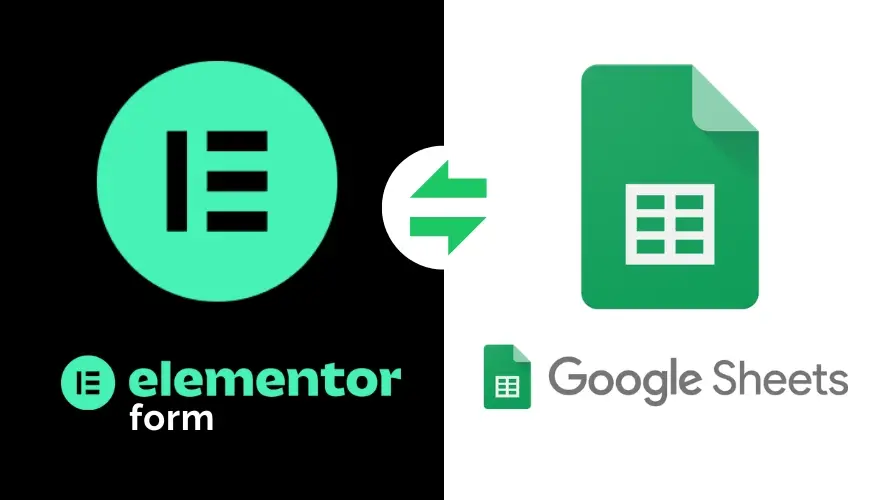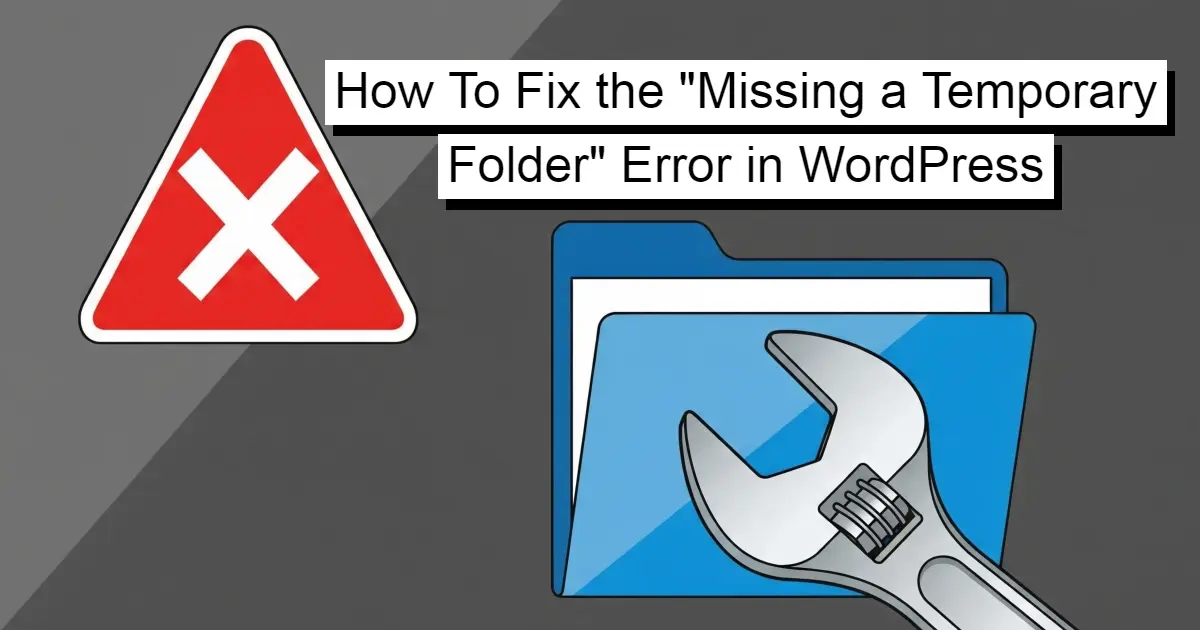Elementor Form offers a user-friendly form-building experience, customization options, advanced features, and seamless integration within the Elementor ecosystem, making it a popular choice for website owners who want to create and manage forms effectively without extensive coding or technical knowledge. You can integrate the form submissions with email marketing providers, CRM platforms, or databases like Google Sheets.
This article will give you an overview of Elementor Form advantages, features, and several methods to connect Elementor Form to Google Sheets. You will understand more about the benefits of using this integration to improve your productivity and business.
What is Elementor Form?
The WordPress plugin for the Elementor page builder offers the Elementor Form functionality. Without extra plugins or coding expertise, it enables you to design and update forms within the Elementor editor.
With the help of Elementor Form's user-friendly drag-and-drop interface, you can quickly add, delete, and rearrange form fields to create the layout you want. You may change the form components' sizes, colors, and fonts as well as add custom CSS if necessary.
There is a variety of forms that you can design or create for your website using Elementor Form. It has tools that provide you flexibility and control over form submissions, assuring the validity of the data you gather, and enabling efficient management and processing of that data.
Elementor Form Complete Features
Elementor Form has comprehensive features that allow you to create and customize forms for your website. Here are the key features of Elementor Form:
Drag-and-Drop Form Builder
You can easily add form fields, rearrange their order, and customize their settings without writing any code.
Multiple Field Types
It includes text fields, email fields, dropdowns, checkboxes, radio buttons, file uploads, date pickers, and more. This gives you flexibility in capturing different types of data from users.
Conditional Logic
Show or hide form fields based on user selections or conditions. This feature allows you to create dynamic and interactive forms that adapt to user input.
Form Validation
It includes built-in validation options for fields like email, URL, number, and more. You can set required fields and define custom validation rules to ensure data accuracy.
Customizable Messages
You can customize the error messages that appear when users submit a form with invalid or missing information. Additionally, you can customize success messages that are displayed upon successful form submission
Email Notification
It enables you to configure email notifications to be sent to specified recipients when a form is submitted. You can customize the email subject, sender, and content, and include form field values in the email body.
Anti-Spam Protection
It provides built-in protection against spam submissions or automated form submissions by bots using reCAPTCHA integration.
Form Styling Options
It offers extensive styling options for forms, allowing you to customize the appearance of form fields, buttons, labels, and more. You can adjust colors, fonts, sizes, and spacing to match your website's design.
Form Submissions Management
It has a submissions management system where you can view and export form submissions. This allows you to access, review, and export the collected form data for further analysis or integration with other systems.
Responsive Design
It ensures that the forms you create are responsive and mobile-friendly. The forms will adapt to different screen sizes and devices, providing a consistent and user-friendly experience for visitors accessing your website from desktops, tablets, or smartphones.
What is Google Sheets?
As part of its Google Drive family of productivity tools, Google offers Google Sheets, a cloud-based spreadsheet program. Users can use it to create, edit, and collaborate online on spreadsheets. Similar to conventional spreadsheet programs like Microsoft Excel, Google Sheets provides a number of features and functionalities.
What are the Benefits of Connecting an Elementor Form to Google Sheets?
Connecting an Elementor form to Google Sheets offers several benefits:
Data Organization
By connecting your Elementor form to a Google Sheet, you can automatically capture form submissions in a structured manner. This allows you to keep all your form data organized and easily accessible in one central location.
Synchronize Updates
Whenever a form submission occurs, the data is immediately recorded in the connected Google Sheet. This provides real-time updates on form responses, allowing you to monitor and analyze the data in real time.
Data Analysis
Google Sheets offers powerful data analysis and visualization tools. By connecting your Elementor form, you can leverage these features to perform calculations, generate reports, and create charts or graphs based on the collected form data.
Data Backup
Storing form submissions in a Google Sheet provides an additional backup of your data. Even if you encounter issues with your website or form plugin, the form data will still be safely stored in Google Sheets.
Collaboration
Google Sheets supports collaboration, allowing multiple team members to access and work on the same spreadsheet simultaneously. This makes it easier to share and collaborate on form data analysis, making it a convenient choice for team-based projects.
Easy Integrations
It integrates with popular email marketing services, CRM systems, and other third-party apps and tools as well as WordPress plugins and add-ons, You can set up further automation by connecting your Google Sheet to other tools such as Google Analytics, email marketing platforms, or project management tools, allowing you to streamline your workflows and processes.
What Kind of Elementor Form Types You Can Create to Connect With Google Sheets?
With Elementor, you can create various types of forms that can be connected to Google Sheets. Here are some common Elementor Form types you can create and integrate with Google Sheets:
Contact Forms
Contact forms are widely used on websites to allow visitors to send messages or inquiries. You can create contact forms with fields like name, email, subject, and message. Connecting these forms to a Google Sheet helps you capture and manage contact information.
Registration Forms
If you have an event or offer that requires user registration, you can create registration forms with fields such as name, email, phone number, and any other necessary details. By connecting these forms to Google Sheets, you can easily track and manage participant information.
Newsletter Signup Forms
Newsletter signup forms are used to collect email addresses from visitors interested in subscribing to your newsletter or receiving updates. By integrating these forms with Google Sheets, you can automatically capture and store email addresses for your mailing list.
Feedback Forms
Feedback forms allow users to provide their opinions, suggestions, or reviews about your products, services, or website. You can include fields for rating, comments, and other relevant information. Connecting feedback forms to Google Sheets enables you to compile and analyze user feedback efficiently.
Survey Forms
If you want to conduct surveys or collect user data for research purposes, Elementor forms can be used to create survey forms. You can include various question types, such as multiple-choice, checkboxes, or open-ended questions. By connecting these forms to Google Sheets, you can gather and analyze survey responses in a structured format.
Job Application Forms
Elementor forms can be used to create application forms, if you are hiring and want to collect job applications directly from your website. These forms can include fields for personal information, education, work experience, and attachments like resumes. Integrating job application forms with Google Sheets allows you to manage and review applications efficiently.
Order Forms
If you are running an e-commerce website or offering products/services, you can create order forms with fields for product selection, quantities, customer details, and payment information. By connecting these forms to Google Sheets, you can keep track of orders and customer information for further processing.
Methods to Connect Elementor Form to Google Sheets
There are some methods to connect an Elementor Form to Google Sheets, here they are:
Zapier Webhook
Elementor Form allows you to add actions after a visitor submits the form. One of them is to use the Webhook action. Zapier provides a webhook option to connect Elementor Form to any of thousands of other services, including Google Sheets.
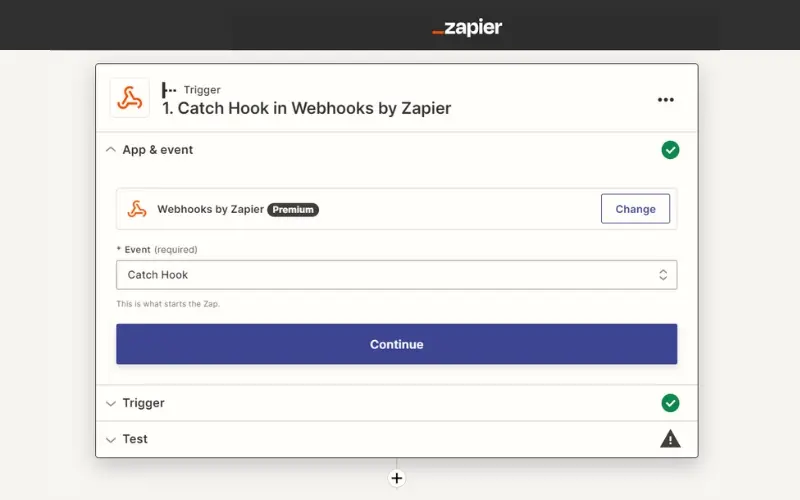
Tutorial Source: How to Connect Elementor to Google Sheets to Collect Leads
Tablesome WordPress Plugin
If you’re looking for a Zapier alternative to connect Elementor Form to Google Sheets, Tablesome can map Elementor Form fields to Google Sheets after you authorize your Google account and you can link multiple Google Sheets and Elementor Forms as much as you need.
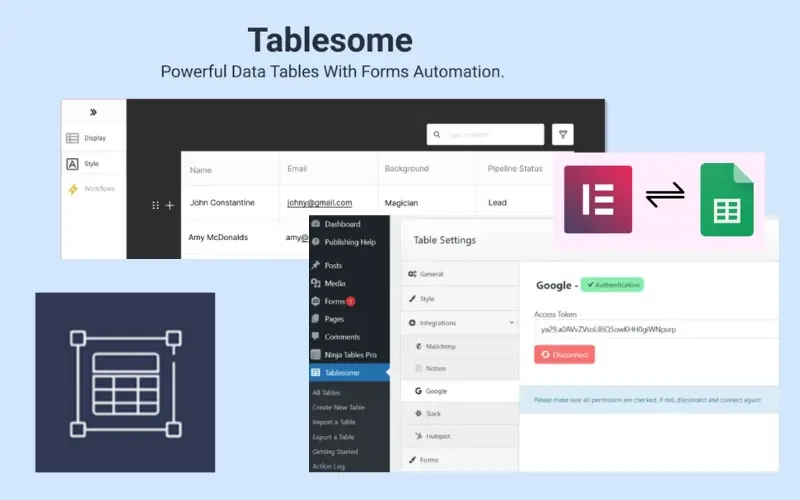
Tutorial Source: Elementor Forms to Google Sheets Connector – WordPress Plugin
AutomatorWP WordPress Plugin
AutomatorWP gives options to connect your WordPress plugins, other apps, and external services together and create automated workflows that consist of 200+ triggers and actions. The powerful automations will let the AutomatorWP Webhooks configure triggers to receive data or actions to send data that can be used for multiple purposes.
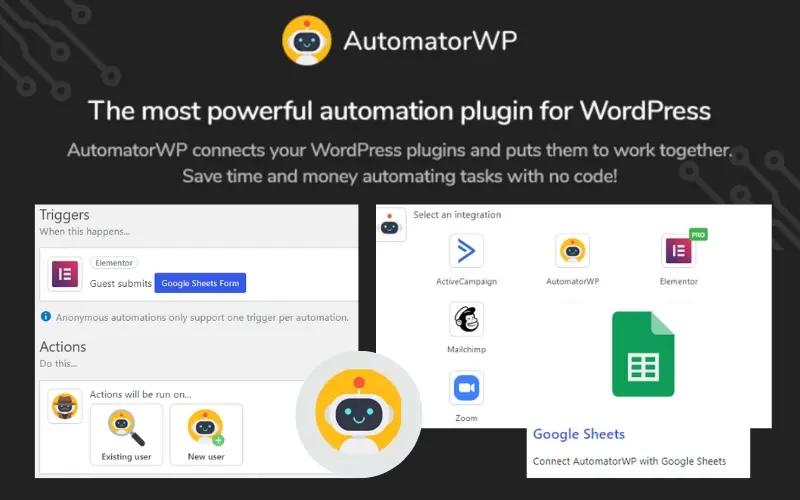
AutomatorWP Documentation: Connect AutomatorWP with Google Sheets
Pabbly Connect Webhook
Similar to Zapier, Pabbly Connect can integrate Elementor Forms to Google Sheets and transfer data between services in no time using Webhook. Instead of creating a new spreadsheet row as Zapier does, Pabbly Connect uses Append Values as Action Event to map the Elementor Form fields to Google Sheets.
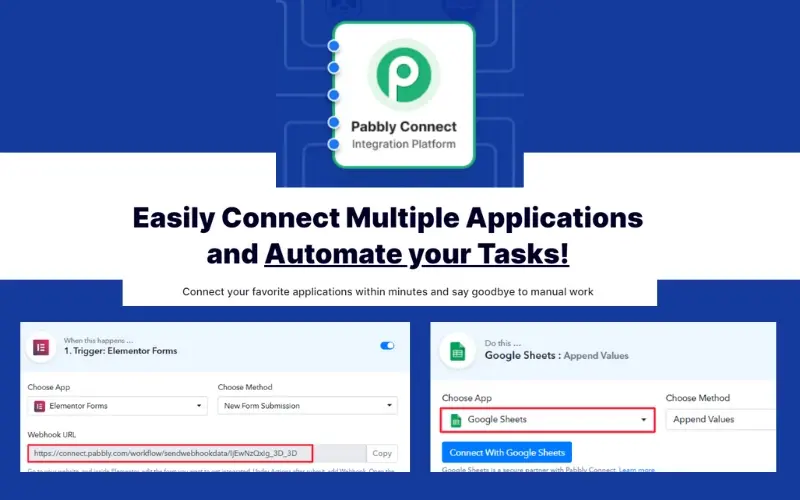
Tutorial Source: How to Integrate Elementor Forms with Google Sheets?
GSheet Connector WordPress Plugin
The free version of this plugin gives you rich features to connect Elementor Form to Google Sheets. After setting the Google API in the plugin option to authorize the Google Sheets access, you can select a Sheet as well as its Sheet Tab to connect in the Elementor Form widget interface.

GSheet Connector Documentation: Elementor Forms Google Sheet Connector
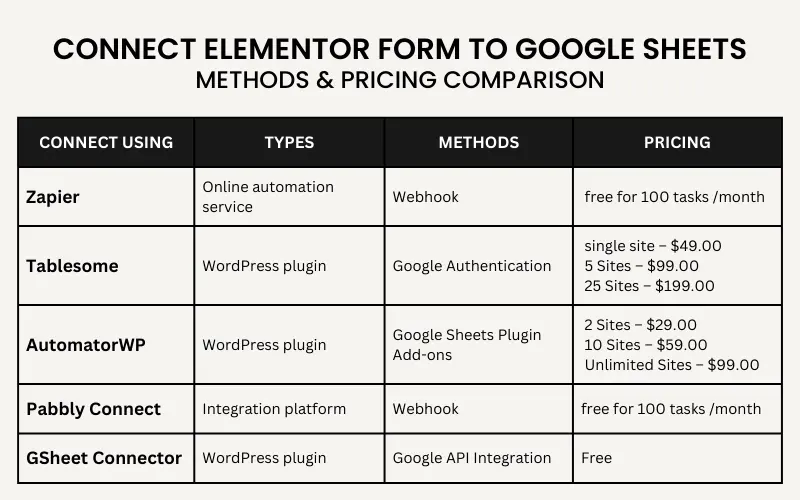
Conclusion
Elementor Form offers a number of features to improve the functionality and user experience of your forms as well as a seamless interaction with the Elementor page builder, which simplifies the process of generating and maintaining forms on your WordPress website.
Overall, connecting Elementor forms to Google Sheets enhances data management, analysis, collaboration, and integration capabilities, making it a valuable integration for businesses and individuals collecting form submissions.
Frequently Asked Questions
Are WordPress plugins free?
WordPress has loads of plugins you can install, some of them are free, but some of them you will need to pay for. You can learn how to use WordPress Plugins on our blog.
Are WordPress-free themes safe?
People often think that free themes have low quality. However, free WordPress themes actually have high quality and are free to use.
Can WordPress be used for eCommerce?
WordPress offers many different ways to build an eCommerce online store for all types of products and markets. Almost 40 percent of all online shops are powered by WooCommerce, a WordPress eCommerce plugin.
How do I get help with my WordPress site?
There’s never a moment we won’t be here to support the development of your website and your business. Unlike many of our competitors, we’re online 24/7, providing support to our users whenever they need it. We provide a live chat experience so we can quickly communicate in real time, meaning you can swiftly get back to enhancing your customers’ experiences.

Audee Mirza is a graphic designer and WordPress developer at audeemirza.com who resides in Surabaya, Indonesia. She's also the author of Graphic Identity Blog, a professional logo designer, and often creates vector illustrations for clients and marketplaces. She enjoys good typography design and all kinds of animation.
View all posts by Audee Mirza















